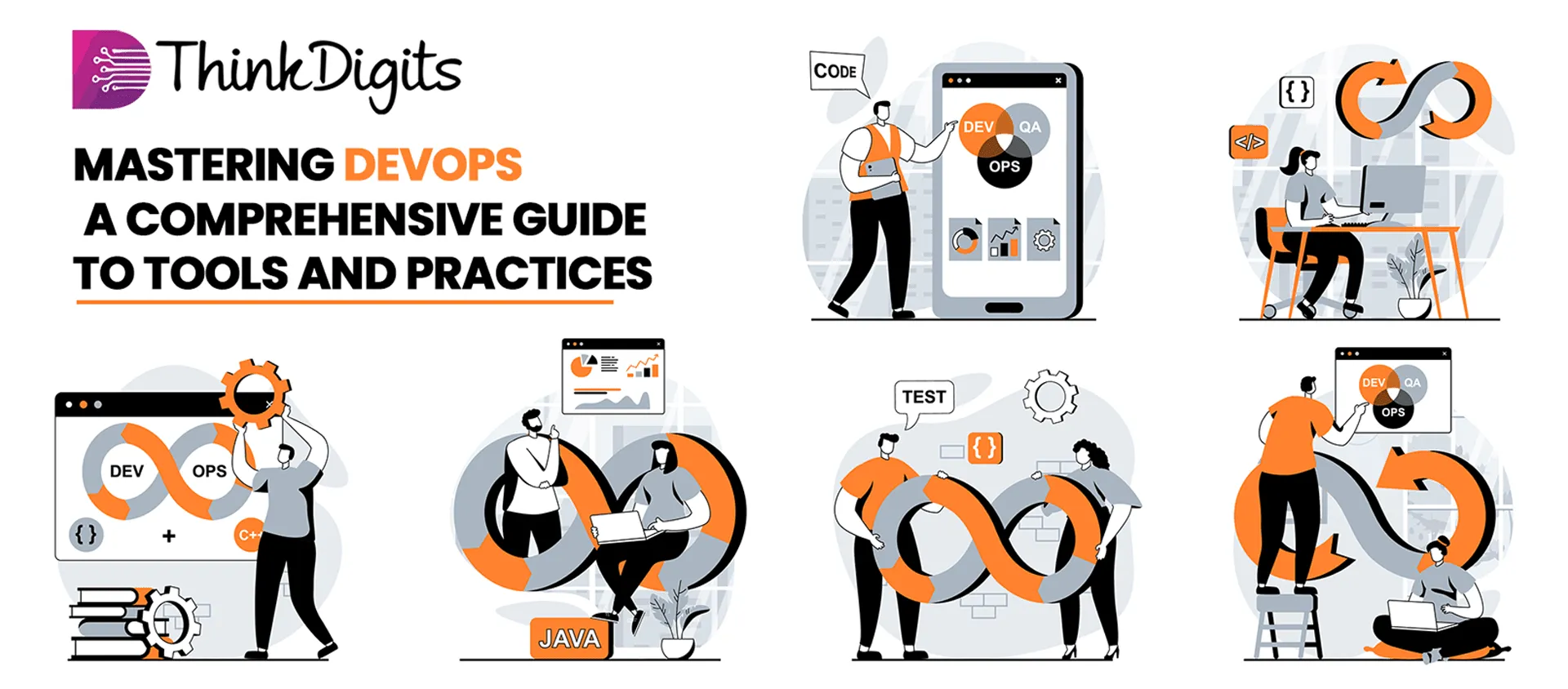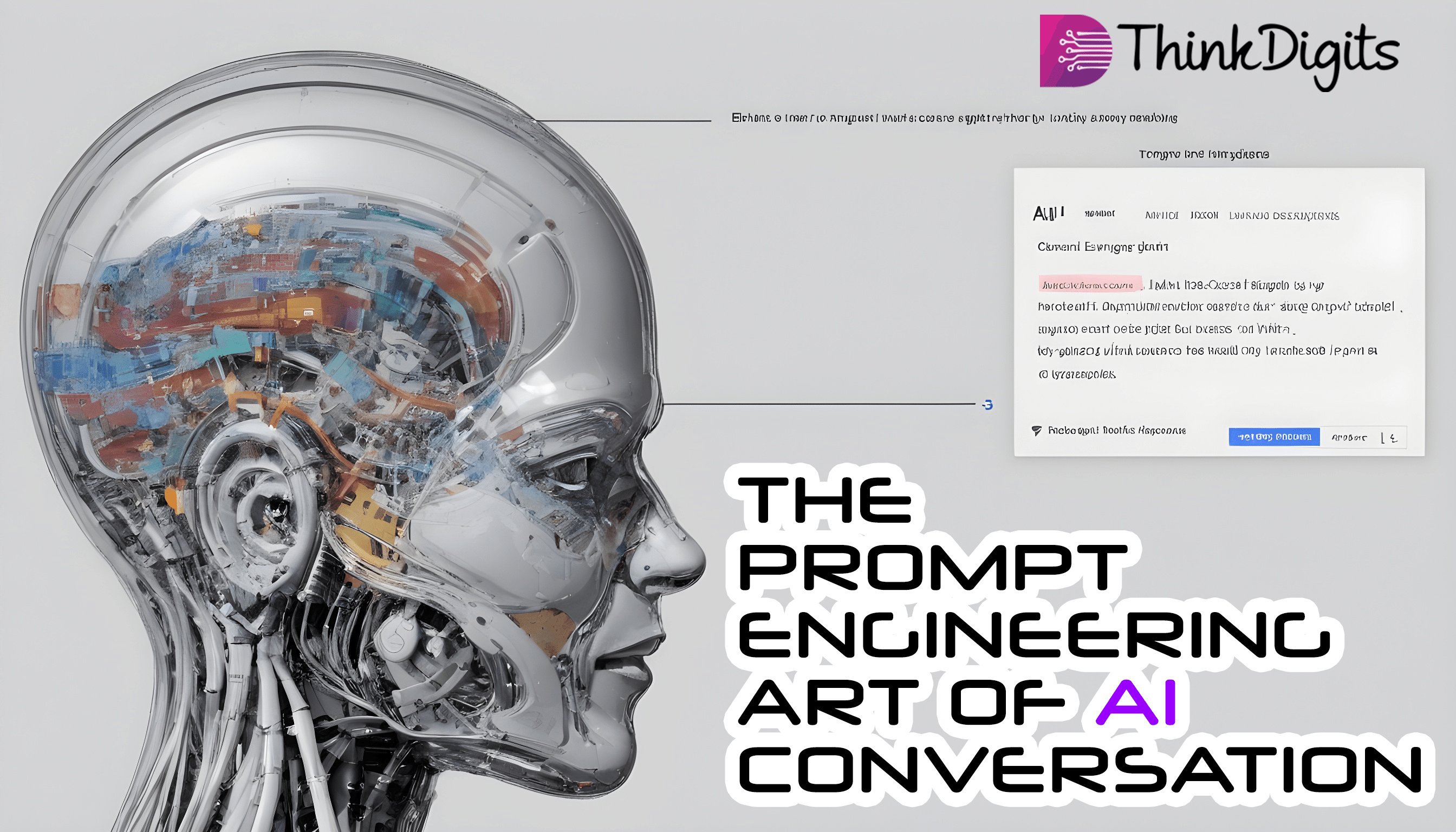In the modern business landscape, survival and success hinge on the ability to pivot and adapt. With the exponential growth of technology, businesses that prioritize digital transformation are often the ones seamlessly conquering the heights of innovation, efficiency, and customer satisfaction.
This dynamic concept isn’t solely focused on technology – it’s a complete overhaul of how a business functions, interacts, and delivers value to its customers. Essentially, it’s a metamorphosis that breathes new life into business operations through the power of digitalization. Are you curious about how digital transformation can optimize your operations, boost profits, and usher you into the future of business? Well, stick around as we uncover the why, how, and the premium benefits of this novel, business game-changer.
Understanding Digital Transformation
The digital age is here, and it’s revamping the way we do business. From small startups to large corporations, every industry is feeling the wave of digital transformation. But what really is digital transformation?
Put simply, digital transformation is the process of utilizing digital technologies to modify or create more effective processes, culture, and customer experiences to meet the changing business and market requirements. It’s not just about adopting new technologies, but about a shift in thought and organization that embraces constant change and challenges the status quo.
Digital transformation looks different for every company, but in general, it primarily involves:
- Re-evaluating existing processes and looking for ways to improve efficiency.
- Boosting customer satisfaction and experience with personalized, right-timed messages and services.
- Implementing new technologies that make employees’ jobs easier and more productive.
In the quest for digital transformation, businesses often encounter challenges. These can include but are not limited to resistance to change, budget constraints, or inability to upskill an existing workforce. Yet, combating these challenges, businesses understand that digital transformation is essential for their survival, especially in the post-pandemic world where digital has become the ‘new norm.’
Steve Jobs once said, “Innovation distinguishes between a leader and a follower.” This rings especially true in today’s dynamic business landscape.
Digital transformation can change the way companies operate and deliver value to customers. It also promotes a culture of innovation and resilience, which is critical in an ever-evolving ecosystem. Sailing through these digital waves is not a choice but a requirement. Embrace digital transformation today to solidify your place in the future landscape.
Remember, transformation is a journey, not a destination. You don’t have to have all the answers, but you do need to be committed to change and ready to evolve.
Lastly, understanding digital transformation can be the secret weapon to thriving and not just surviving in this digital age. Whether you’re just getting started on your journey or looking to bolster your current digital initiatives, ThinkDigits’ guide to successful digital transformation can help illuminate the path forward.
Benefits of Digital Transformation
The digital world is transforming the way businesses function, opening doors to unprecedented growth, creative innovation, and operational efficiency. A path once paved with traditional practices is now enriched with cutting-edge digital solutions that empower organizations to pave the way toward a more prosperous future. In this context, a thorough understanding of the benefits derived from embracing digital transformation can prove invaluable. Here, we shed some light on three key advantages: Increased efficiency, improved decision-making, and enhanced customer experience.
1. Increased Efficiency
With digital transformation comes the promise of unparalleled efficiency. Businesses today are trading the dated, mundane tasks driven by manual efforts and replacing them with automated processes. This pivot towards digitalization guarantees a plethora of benefits:
- Time-saving: Digital transformation reengineers lengthy tasks into swift automated processes, thereby saving considerable time.
- Increase in productivity: More time can be devoted to strategic tasks as automation reduces the need for employees to focus on repetitive tasks.
- Cost reduction: Digital solutions, in the long run, help eliminate unnecessary costs associated with manual errors, delays, and redundant processes.
2. Improved Decision Making
The second significant advantage of digital transformation lies in its potential to improve decision-making. Powered by sophisticated technologies like AI and machine learning, digital platforms can analyze vast amounts of data, producing actionable insights. These insights enable businesses to make data-driven decisions that are more accurate and effective. Some notable benefits include:
- Business Intelligence: Advanced data analysis tools offer deep insights into business operations and customer behavior, contributing to more informed decision-making.
- Predictive Analysis: Leveraging historical data, businesses can predict future trends and events, enabling proactive planning.
- Risk Mitigation: Reliable data allows businesses to identify potential risks and counter them before they escalate, truly demonstrating the power of predictive analysis.
3. Enhanced Customer Experience
Finally, at the heart of digital transformation is the drive to enhance customer experience. A digital-first approach enables businesses to understand their customers more intimately and deliver tailored relevant experiences. This approach includes:
- Personalized Marketing: Data-driven insights enables businesses to craft personalized marketing messages, increasing customer engagement.
- Efficient Customer Service: Digital tools such as Chatbots and AI-based support systems offer quick, effective customer service solutions.
- Customer Insights: By analyzing customer data, businesses can learn about customer preferences, behavior, and feedback, allowing them to customize their offerings for improved satisfaction.
With all these benefits in perspective, it is abundantly apparent that digital transformation is the way forward for contemporary businesses. While it might seem like a significant leap at first, the journey towards digital mastery can bring immense value to a business, outshining any initial pain points or hiccups. Embracing digital transformation today sets a business up for a prosperous tomorrow.
Digital Transformation in Different Industries
Ah, Digital Transformation, a buzzword we’ve all heard, especially in an increasingly digitalized world. But what exactly does it mean for different industries? How is it reshaping the dynamics within legacy sectors like healthcare 



1. Healthcare
The global pandemic has indeed put the healthcare industry under a spotlight. From telemedicine to AI-driven diagnostics, we’re witnessing a new era unfold before us. Digital transformation has played a pivotal role in enhancing patient care, streamlining operations, and even managing hospital inventory. Moreover, through data analytics and cloud computing, healthcare providers are now in a better position to offer personalized treatment plans. Remote medical consultations and e-prescriptions have made healthcare accessible even during lockdowns, all thanks to this digital shift.
2. Manufacturing
Meanwhile, for the manufacturing sector, digital transformation is like a sharp new tool in an old tool kit. It’s forging paths previously deemed impossible. Automation and AI have optimized production lines, reducing both time and operational costs. Manufacturers are now able to monitor real-time machine performance, track inventory, and predict maintenance needs, all from the convenience of a digital platform. What more could they ask for
3. Retail
As for the retail industry, it’s clear that the shopping experience in the age of digital transformation bears little resemblance to yesteryears. Buying online has become second nature to most of us. Retailers are upping their game by providing personalized experiences to shoppers with recommendations based on their past buying behavior. It’s like having a personal shopper 
4. Finance
In the finance sector, processes that once took days or even weeks to complete can now be done in minutes, all thanks to digital transformation. Whether it’s instant money transfers, paperless documentation, or sophisticated AI-powered risk assessments, technology is making banking more efficient and accessible. Today, customers can access and manage their finances at their fingertips, anytime, anywhere 
To wrap it up, digital transformation is indeed a game-changer across various industries. The way it seamlessly integrates technology within traditional frameworks breathes new life into these sectors, making them more efficient and future-ready. So let’s gear up to embrace the continuous digital wave 
Key Technologies Driving Digital Transformation
In our increasingly digitized world, companies that want to keep up need to embrace a range of technologies. These technologies, many born from the rapid development of the internet, have given rise to a new business phenomenon: Digital Transformation.
Let’s explore four key technologies driving the wave of digital transformation:
1. Cloud Computing
At its essence, cloud computing involves storing and accessing data and applications over the internet rather than on local servers or personal computers. This technology is a game-changer for businesses, particularly small to medium enterprises, for several reasons:
- It offers virtually unlimited storage capacity, which mitigates the need for substantial investment in in-house server infrastructure.
- Companies can scale operations up or down according to their needs, paying only for the resources they use.
- Cloud computing provides greater flexibility, allowing teams to work from anywhere, anytime — an invaluable feature in today’s remote working landscape.
2. Big Data Analytics
Big data analytics refers to the process of collecting, managing, and analyzing large sets of data to spot patterns and gain insights. With the explosion of data in the digital age, this technology has found immense value across industries. By analyzing big data, businesses can:
- Improve decision-making with data-driven insights.
- Understand their customers better, leading to improved product offerings and higher customer satisfaction.
- Anticipate market trends and stay ahead of the competition.
3. Artificial Intelligence
Regarded by many as the future of technology, Artificial Intelligence (AI) is transforming the way businesses operate. AI machines or software can learn from experience, adjust to new inputs, and perform human-like tasks. With AI, businesses can:
- Streamline their operations by automating repetitive tasks.
- Engage customers more effectively with AI-powered chatbots.
- Analyze massive amounts of data quickly and accurately, leading to increased efficiency.
4. Internet of Things
The Internet of Things (IoT) connects physical devices to the internet, enabling them to collect and share data. From smart homes to wearable technologies, IoT is reinventing industries and transforming lives. For businesses, leveraging IoT can:
- Increase operational efficiency through automation of tasks.
- Enhance customer experience by gathering and analyzing user behavior data.
- Drive innovation by introducing new products or services based on IoT capabilities.
By embracing these digital technologies, businesses are not only staying competitive in the ever-evolving landscape, but they’re also enhancing their operations, boosting customer engagement, and unlocking new avenues for innovation. These technologies signify more than just digital transformation; they represent a new era of business, an era defined by disruptive innovation, unparalleled efficiency, and customer-centric approaches. This is the era of digital business revolution. Let’s embrace it.
Challenges in Implementing Digital Transformation
The digital age has brought thrilling opportunities for businesses all around the globe. With the power to streamline operations, drive innovation, and transform customer experiences, organizations are eagerly boarding the digital transformation train. However, switching to a digital-first strategy isn’t always a walk in the park. There are challenges companies must tackle head-on to leverage the full potential of digital technologies. We’ll examine three of the most common roadblocks: legacy systems integration, data security and privacy, and change management.
1. Legacy Systems Integration
Many organizations have been running on legacy systems – outdated methods, technologies, and processes that are ingrained in the company’s operations. While these ‘dinosaurs’ may still be functional, their inability to work smoothly with new digital tools presents a significant challenge.
- Integration Complexities: One must bridge the gap between old and new, requiring a significant amount of time and technical resources. The introduction of advanced technologies like cloud computing, AI, and machine learning often highlights the inefficiencies and rigidity of these old systems.
- Maintenance and Compatibility Issues: Legacy systems often require specific, outdated knowledge to maintain. As technology advances, fewer resources are available to support those old systems. Moreover, compatibility issues between the old and new systems arise, making communication and data transfer difficult.
2. Data Security and Privacy
Switching to digital introduces substantial data security and privacy issues. In the digital world, data is a valued asset, but protecting it can feel like fighting a multi-headed beast.
- Emerging Threats: With advancing technology, cybersecurity threats also evolve. Organizations must be vigilant and proactive, adopting solid security measures to ensure that their and their customers’ data are well-protected.
- Standards Compliance: Various regional and international standards, such as The General Data Protection Regulation (GDPR) and The California Consumer Privacy Act (CCPA), have to be followed. This requires a good understanding and careful implementation of these guidelines, and that’s not a small feat.
3. Change Management
Ah, the notorious beast of change. Implementing digital transformation means changing the way a company operates, and change can be daunting.
- Resistance to Change: Both individuals and groups in a company might resist the change due to fear of the unknown or concern about job security. It’s often difficult but crucial to transform this resistance into acceptance.
- Lack of Digital Skills: The digital world requires new skills. A company might discover that their current workforce lacks essential digital skills, making the transformation challenging.
“The only thing that is constant is change,” Heraclitus famously said. In the world of business, subtle as it may be, this statement rings particularly true. Successful digital transformation may be fraught with challenges, but they are not insurmountable. The goalposts of digital success are constantly shifting. However, with a clear strategy, a forward-looking mindset, and nimble operations – businesses can transform these challenges into opportunities, unlocking a new horizon of immense possibilities.
Successful Examples of Digital Transformation
Digital transformation – a buzzword that has shaken the corporate world in the past few years and shifted the way businesses operate. At its core, digital transformation breaks the mold of traditional business models and integrates digital technology into all areas of business. But what does this look like in practice? Well, we’ve got a few shining examples that beautifully illustrate successful digital transformations.
First on our list is Microsoft. Under the astute leadership of Satya Nadella, Microsoft’s digital transformation journey set a milestone in the tech industry. They went from primarily selling software in boxes to becoming a giant in cloud computing and AI. Their shift towards cloud-based solutions, such as Microsoft Office 365 and Azure, not only upgraded their business scope but also effectively catered to the burgeoning demand for remote working solutions in recent times.
“In the AI world, data is the new oil, and China is the new Saudi Arabia.” – Kai-Fu Lee, AI expert
AI expert, Kai-Fu Lee’s statement draws a clear analogy. Our next featured company, Netflix, perfectly embodies it. Netflix began as a DVD rental service but took no time to reinvent its business model using data analytics and AI. Today, Netflix’s algorithm suggests personalized viewing recommendations, enhancing customer experience and loyalty.
Moving onto another titan, Amazon. Amazon disrupted the retail industry by leveraging digital transformation. It expanded from being an online bookstore to a diverse marketplace and a leader in cloud services. Amazon’s innovative actions, ranging from drone deliveries to Amazon Go stores, demonstrate a clear vision of a tech-driven future.
Here are three quick takeaways from our exemplar businesses:
- Start with a clear vision: All three companies started their transformation journey with a definite goal in mind. Microsoft aimed to adapt to the changing software market, Netflix aimed to revamp their services, and Amazon aimed to diversify their market presence.
- Adopt customer-centric approach: Each company prioritized the customer experience. They used technology as a tool to improve user interactions and personalized experiences.
- Continually innovate: The success of these companies is tied to their innovative spirit. They constantly identify and implement cutting-edge technologies.
These companies transformed their business landscapes with tech-forward strategies, irrefutably indicating the potency of digital transformation. As the world continues to evolve digitally, businesses must embrace the change and ride the wave, creating their success stories of digital transformation.
Future Trends in Digital Transformation
In the rapidly evolving world of technology, digital transformation trends are shaping the future in fascinating ways. Anticipating these leaps and swings is more than just an observation of the tech world—it is a strategic roadmap for businesses and individuals to thrive and stay ahead of the curve. Understanding and infusing these trends into your business strategy can determine prosperity or peril in the forthcoming digital frontier.
1. Machine Learning
One key player in this force of change is Machine Learning (ML). Machine learning is all about teaching computers to learn from experience, much like humans. But what’s captivating about ML? How is it changing the digital landscape?
- Efficiency: ML algorithms can efficiently process massive amounts of data in moments, a task that would take humans hours or even days.
- Predictive Analysis: With its ability to analyze past data and predict future trends, businesses use ML to forecast customer behavior, market dynamics, and much more.
- Automation: ML is the driving force behind automation, reducing the need for human intervention in repetitive tasks and improving efficiency and productivity.
As this innovative technology continues to evolve, we can expect to see products and systems becoming more intuitive, adaptive, and personalized, dramatically transforming the way we live and work.
2. Blockchain
Blockchain technology, often associated with cryptocurrencies like Bitcoin, is another digital transformation trend worth watching. This secure, decentralized, and transparent technology has the potential not only to alter the financial world but to revolutionize virtually any sector.
- Data Security & Integrity: Blockchain’s secure and immutable nature ensures that the data it holds is safe from tampering, making it valuable in domains where data security is paramount.
- Decentralized Platforms: By eliminating the need for intermediaries, Blockchain can reshape sectors like finance, supply chain, healthcare, and more, permitting direct transactions between parties.
- Transparency: The shared public ledger feature of Blockchain allows for unparalleled transparency, promoting trust and accountability.
As the full potential of Blockchain gets explored in various domains – from supply chain to healthcare, insurance, and beyond – it promises a future where digital transactions are more secure and streamlined.
3. Augmented Reality
Another digital innovation that’s gaining prominence is Augmented Reality (AR). AR enhances real-world environments with digital overlays, making possible everything from interactive shopping experiences to immersive gaming.
- Enhancing Real World: AR is changing the digital game by enhancing real-world scenarios with interactive and fun elements.
- Virtual Shopping: With AR, consumers can enjoy a completely new shopping experience, trying out products virtually before making a decision.
- Training and Education: AR can significantly augment the learning process, making abstract concepts more understandable and engaging.
As we step forward into the digital future, AR holds the potential to revolutionize industries, offering immersive and personalized experiences to users.
Embracing these digital transformation trends – Machine Learning, Blockchain, and Augmented Reality – isn’t a distant future fantasy but a necessity for survival in the rapidly changing tech landscape. As these digital trends continue to evolve, the potential for innovation and transformation is limitless. Ready to be a part of this digital transformation adventure? Emojis 



Conclusion
Embracing the digital transformation and all it involves – from cloud computing and big data analytics, to artificial intelligence (AI) and the Internet of Things(IoT) – isn’t just about staying relevant in a technologically advanced world. It’s about maintaining a competitive edge and innovating for the future. With benefits like increased efficiency, improved decision making, and an enhanced customer experience, digital transformation offers a wealth of opportunities to businesses willing to take the plunge.
However, remember that this digital journey isn’t devoid of challenges, these barriers can range from legacy system integration issues to data security concerns and the requirement of an effective change management strategy.
Success is within reach; several companies have already demonstrated the enormous potential that digital transformation holds (do add examples here as needed). The future promises even more exciting advancements with machine learning, blockchain, and augmented reality, further hastening the pace of digital transformation.
Getting ahead in the digital race seems daunting, but you’re not alone. ThinkDigits, a leading AI/ML software company, can be your guide and mentor in this digital expedition. Our range of intelligent applications and AI and ML solutions pave the way to a transformative future, potentially revolutionizing industries like healthcare, manufacturing, retail, and finance. Are you ready to accelerate your digital transformation journey? Visit us at ThinkDigits and let’s co-create the digital future!



